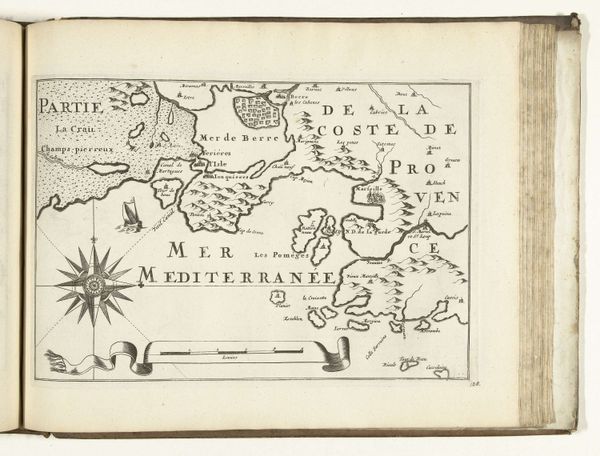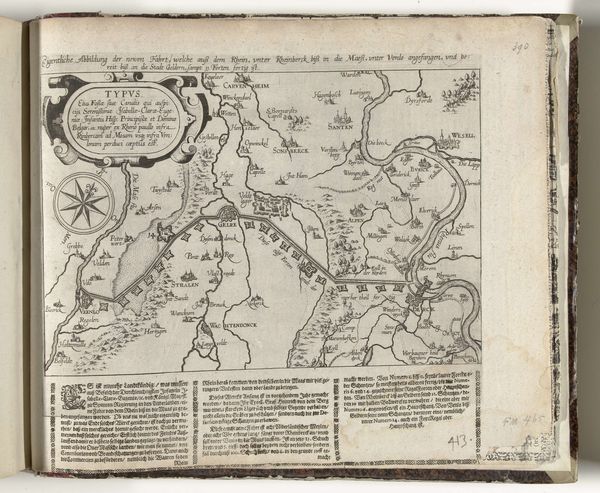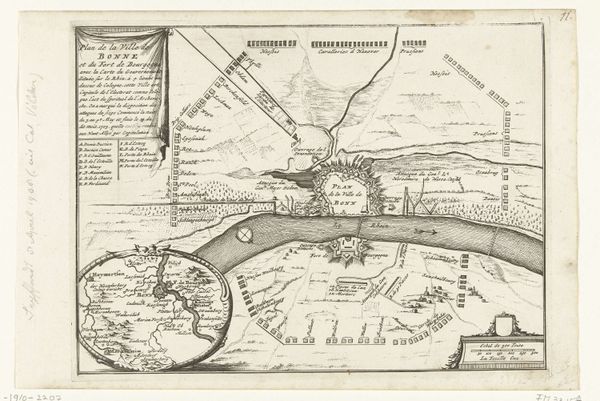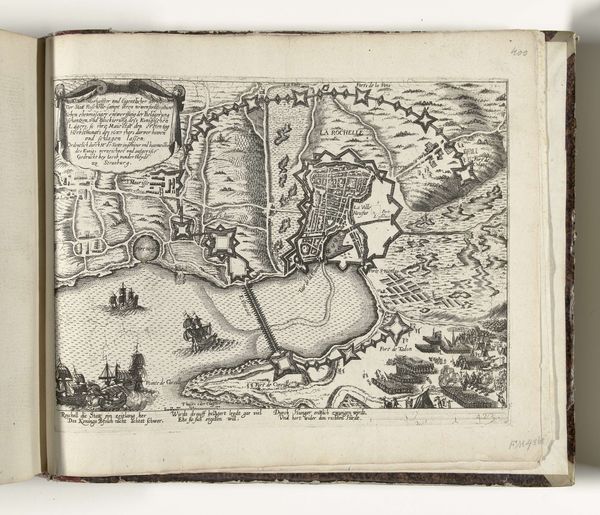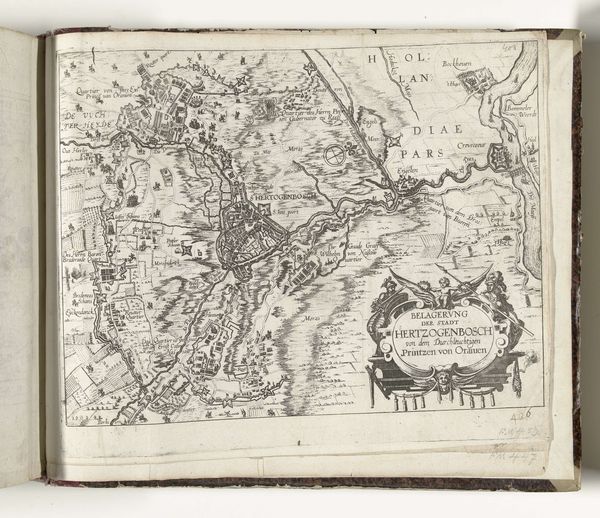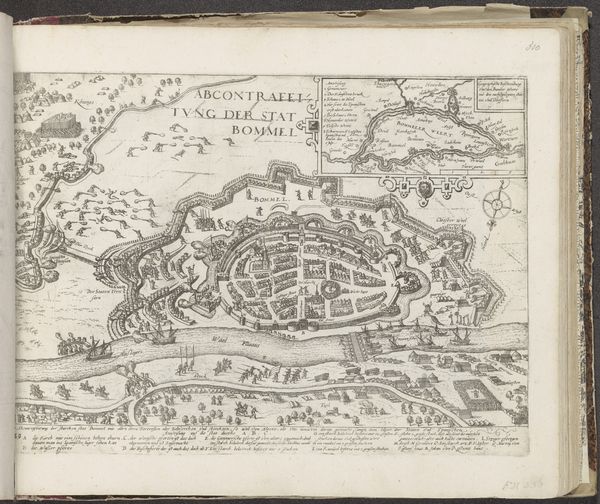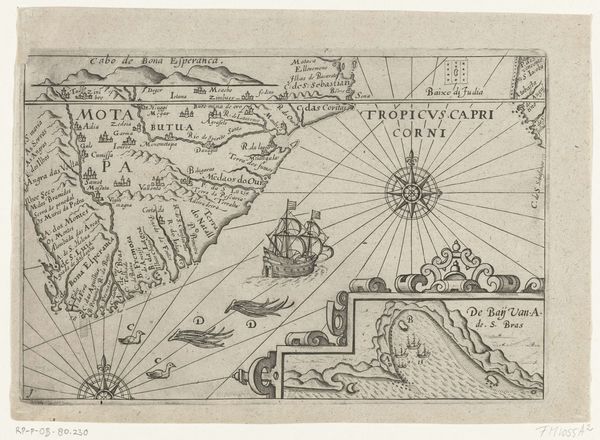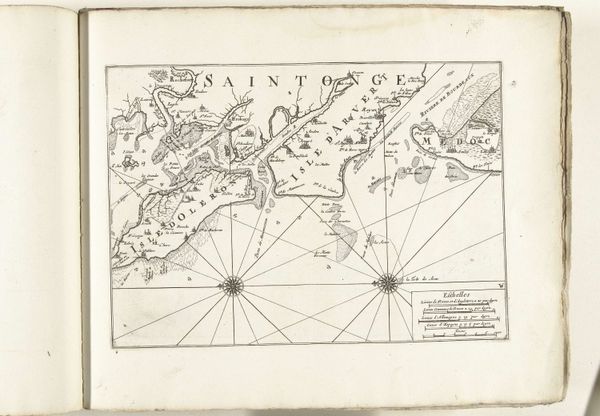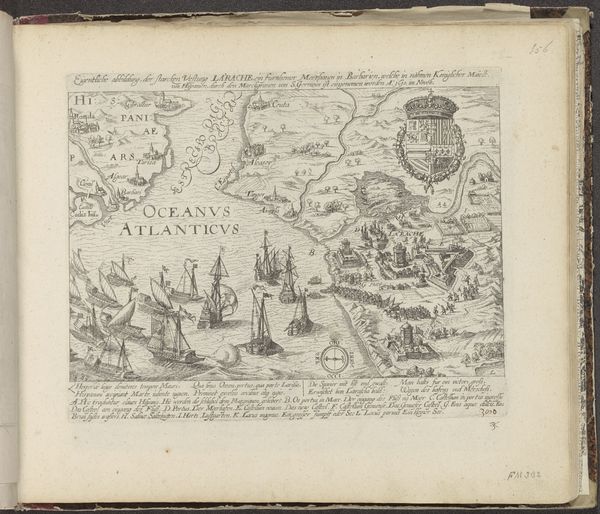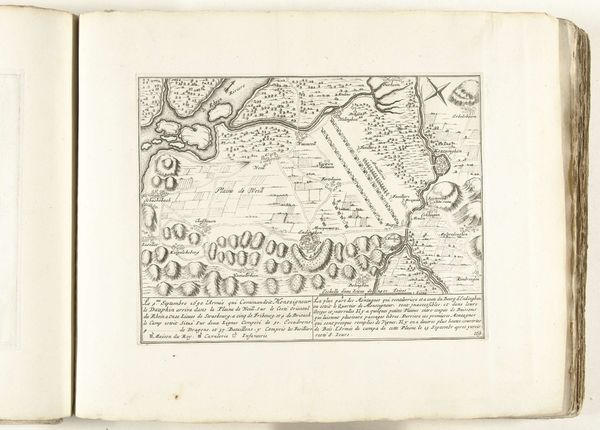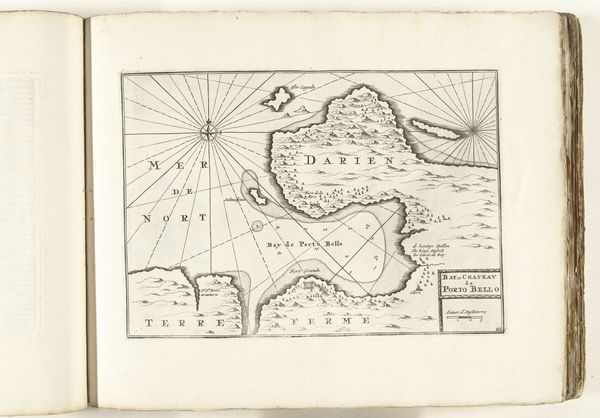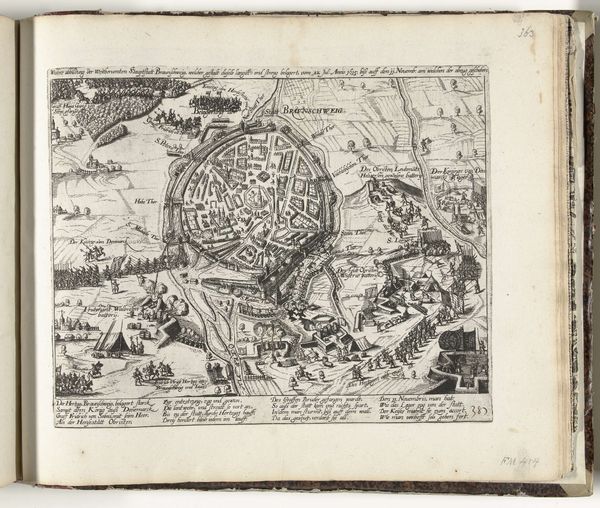
print, engraving
#
baroque
# print
#
landscape
#
engraving
Dimensions: height 247 mm, width 330 mm
Copyright: Rijks Museum: Open Domain
Curator: This engaging engraving presents "Kaart van het eiland Ré bij La Rochelle," a map of the Isle of Ré near La Rochelle, dating back to around 1627. Frans Hogenberg is credited with this print, housed right here at the Rijksmuseum. What’s your initial take on it? Editor: It feels strikingly strategic, almost geometric. My eyes are drawn to those star-shaped fortifications—symbols of power, clearly, but what specific kind of power? And why choose a star for a fort design? Curator: Well, in the 17th century, island maps were pivotal in understanding naval strategy and coastal defenses. The star forts, prominently featured, represent a response to advancements in artillery, designed to deflect cannon fire. Hogenberg, however, was part of a broader, complicated political struggle that helped shape this landscape in ink and paper. Editor: Ah, I see the layers. This isn’t just a map; it's a visualization of conflict, the island a contested space. The very act of charting it imbues the land with significance, doesn't it? A symbol of ambition, certainly. But there are religious undertones to the fortifications when seen through a psychological lens. Curator: Exactly. La Rochelle was a Huguenot stronghold, a point of contention between Catholics and Protestants in France. Mapping and fortifying the Isle of Ré was instrumental to sieging it to starve La Rochelle to its breaking point. That level of tension underscores its purpose. Editor: So, the map is as much a weapon as any cannon? What kind of symbolism were they consciously drawing on, even at that early point, from classical symbology and pre-Christian patterns in defense? Were the builders trying to subtly harness unseen powers? Curator: In a sense, yes. Visual representations carried immense weight during this period. These prints would circulate among political elites, helping shape perceptions of the conflict. I do think seeing it with more emphasis on psychology can allow one to examine deeply how defensive symbols changed in response to political events. Editor: Seeing how visual representation becomes part of how conflict and identity are constructed certainly helps to shift focus from historical text to emotional engagement. Thank you for shifting my paradigm on these fascinating tensions. Curator: My pleasure, and perhaps you've highlighted what speaks volumes to modern eyes—not just its value for defense, but also a distillation of our need to understand the politics embedded into maps.
Comments
No comments
Be the first to comment and join the conversation on the ultimate creative platform.
